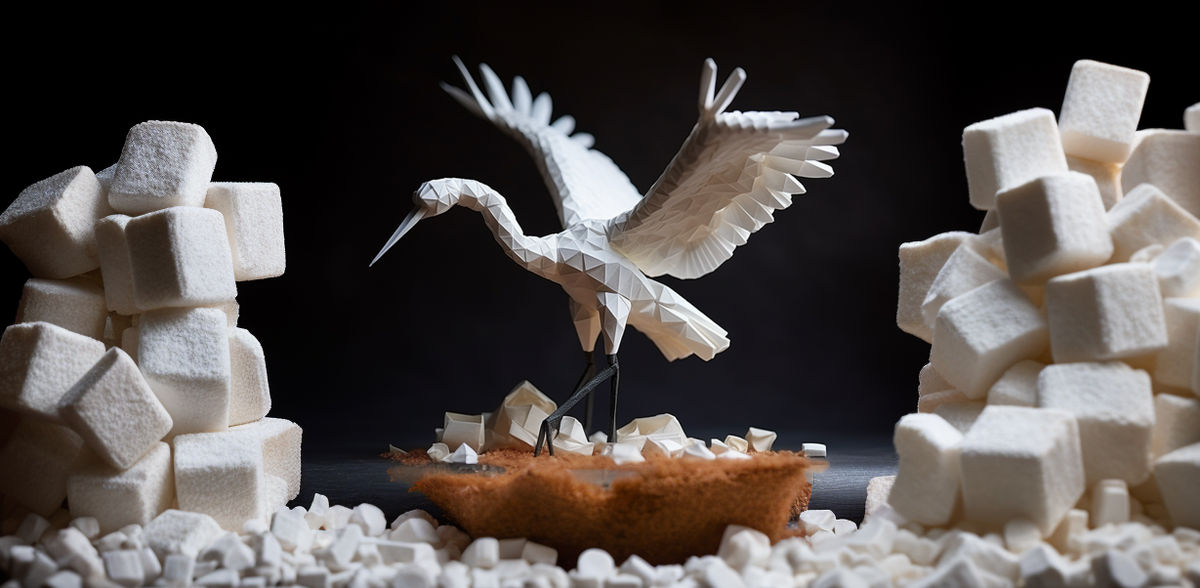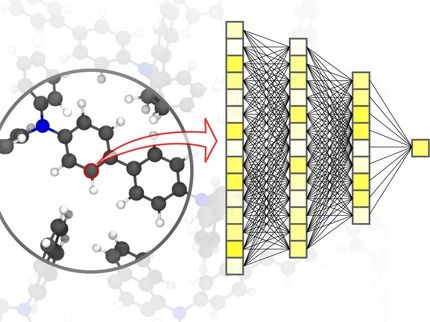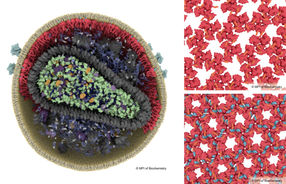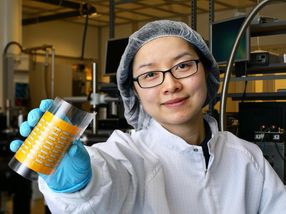New Discovery: Toward sugar origami
Folded carbohydrates could open up completely new perspectives in biomedicine and materials science
Researchers at the Max Planck Institute of Colloids and Interfaces (MPICI) have designed a carbohydrate sequence capable of folding into a stable secondary structure. Until now, such self-folding biopolymers had only been developed for DNA and proteins, and sugars were previously considered too flexible to assume a stable conformation. Folded carbohydrates could open up completely new perspectives in biomedicine and materials science.
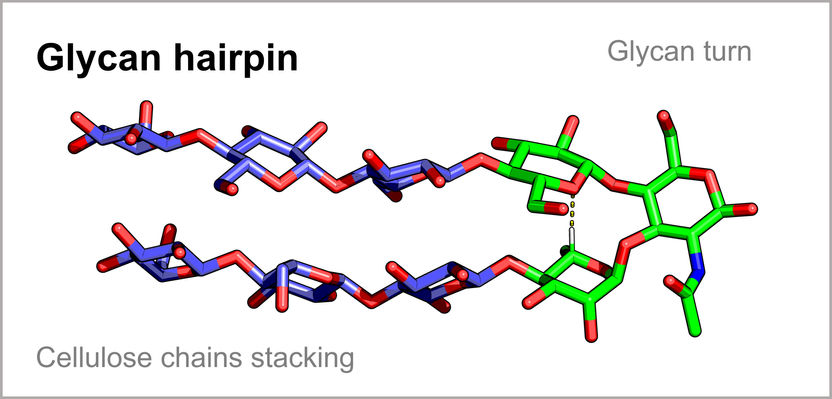
© Max-Planck-Institut für Kolloid- und Grenzflächenforschung / Martina Delbianco
Carbohydrates make up about 80 percent of the earth's biomass – half on land and half in the sea. Yet, their material properties are still quite poorly understood. The researchers led by Dr. Martina Delbianco, from the Department of Biomolecular Systems, are interested in how polysaccharides, or long chains of sugars, fold and assemble into materials. For example, they have discovered how individual glucose chains come together to generate cellulose, the main component of plants. Using this knowledge, they are now designing non-natural carbohydrates. Their work is inspired by peptide research (short proteins). Knowledge about natural proteins, was used to design synthetic peptide sequences that could adopt programmable 3-D shapes and perform specific functions. This approach opened up many possibilities, for example in drug production and nanotechnology. Carbohydrates hold even more opportunities owing to their higher abundance and diversity when compared with peptides.
In their recent paper in the journal Nature Chemistry, Dr. Delbianco and her team demonstrated that it is possible to design glycans that adopt a specific stable conformation in aqueous solution. They linked together natural sugar motives to generate a shape that does not exist in nature, a hairpin. In a Lego-like approach, they connected two linear cellulose rods (in blue) to a rigid glycan turn (in green) to obtain a new non-natural shape. "Carbohydrates can be generated with programmable shapes, which opens up the possibility of endowing glycans with new properties and functions," says Dr. Martina Delbianco. The structure was quickly prepared using "Automated Glycan Assembly" (AGA), a process in which monosaccharides are connected in an automated synthesizer to generate tailor-made polysaccharide sequences. To reveal the 3-D structure, Dr. Delbianco’s group used a plethora of analytical techniques. Furthermore, international researchers like Prof. Jesús Jiménez-Barbero from CIC BioGUNE collaborated with Dr. Martina Delbianco. "The 3-D structure of a biomolecule determines its function. This could mean, for example, that in the future we might use folded sugars as drugs, as catalysts for chemical transformations, or as structural units for the creation of nanomaterials," says Dr. Martina Delbianco.
Original publication
Other news from the department science

Get the life science industry in your inbox
By submitting this form you agree that LUMITOS AG will send you the newsletter(s) selected above by email. Your data will not be passed on to third parties. Your data will be stored and processed in accordance with our data protection regulations. LUMITOS may contact you by email for the purpose of advertising or market and opinion surveys. You can revoke your consent at any time without giving reasons to LUMITOS AG, Ernst-Augustin-Str. 2, 12489 Berlin, Germany or by e-mail at revoke@lumitos.com with effect for the future. In addition, each email contains a link to unsubscribe from the corresponding newsletter.
